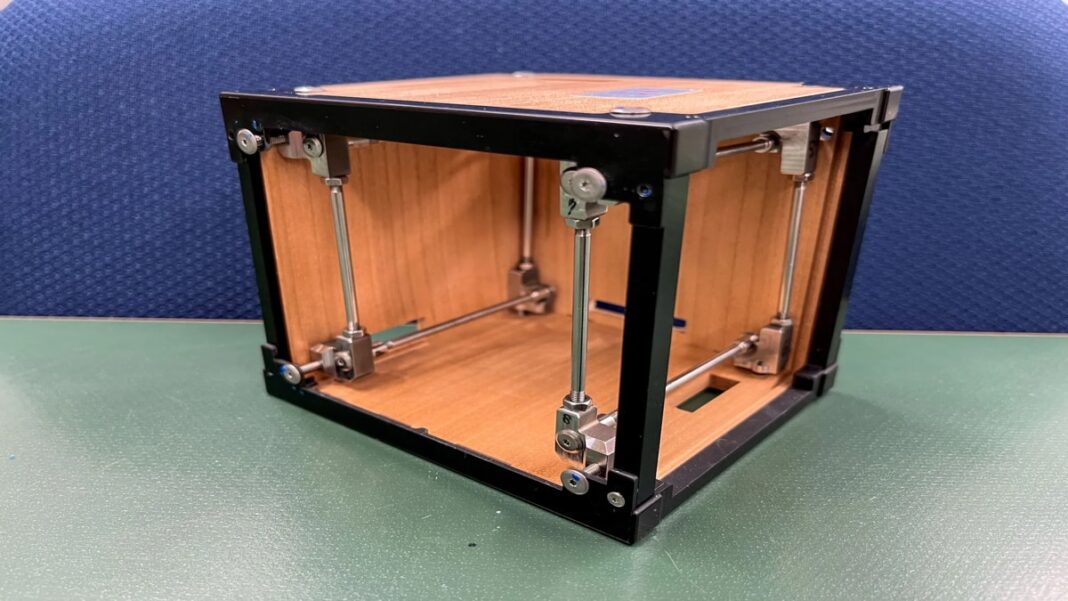In a groundbreaking leap for space exploration, the world witnesses the launch of the first-ever wooden satellite, LignoSat, into Earth’s orbit. This eco-friendly initiative by the Japanese Aerospace Exploration Agency (JAXA) marks a pivotal moment in the quest for sustainable materials in satellite technology. Let’s delve into this extraordinary mission and its potential impact on the future of space exploration.
### The Story So Far: A Wooden Satellite in Space
Imagine a satellite crafted from honoki magnolia wood, renowned for its durability and resistance to extreme conditions. LignoSat, measuring a mere 10 cm in length, represents a fusion of traditional Japanese woodworking techniques and cutting-edge space technology. Its primary objective? To test the feasibility of wood as a viable material for satellite construction in the unforgiving environment of space.
### Sustainability Goals in Space Technology
LignoSat’s journey begins with its launch aboard SpaceX-31’s Dragon Cargo Vehicle, eventually deploying from the International Space Station using the JEM Small Satellite Orbital Deployer-30. Accompanied by four other CubeSats, this wooden satellite embarks on a mission to push the boundaries of sustainable space technology. The project aims to evaluate how wood withstands cosmic radiation, temperature fluctuations, and physical stress in the vacuum of space.
### Key Objectives and Experiments
Equipped with state-of-the-art sensors, LignoSat diligently monitors stress levels on its wooden panels, tracks temperature variations, and measures radiation exposure. The data collected from these experiments will provide invaluable insights into the structural integrity and practicality of utilizing wood in space technology. Researchers are particularly keen on understanding how the satellite’s wooden structure interacts with the geomagnetic field, potentially impacting its operational capabilities.
### The Future of Eco-Friendly Satellites
In a world increasingly focused on environmental sustainability, the emergence of eco-friendly satellite materials holds immense promise. Traditional satellite components often rely on rare metals and synthetic materials, contributing to space debris and environmental harm. JAXA’s LignoSat project serves as a beacon of hope for a greener approach to satellite technology. If successful, this venture could revolutionize the global space industry, setting new standards for environmentally conscious practices.
### Conclusion
The launch of LignoSat signifies a monumental step towards sustainable space exploration, showcasing the innovative potential of wood as a viable material in satellite construction. As we look towards the stars, let’s remember the importance of fostering eco-friendly solutions that preserve our planet and pave the way for a brighter future in space technology.
#### Frequently Asked Questions
##### 1. How was LignoSat launched into orbit?
LignoSat was launched aboard SpaceX-31’s Dragon Cargo Vehicle and deployed from the International Space Station using the JEM Small Satellite Orbital Deployer-30.
##### 2. What is the primary objective of the LignoSat mission?
The primary objective of LignoSat is to explore the feasibility of wood as a sustainable material in satellite construction and assess its performance in space.
##### 3. What materials were used in crafting LignoSat?
LignoSat was crafted using honoki magnolia wood, known for its durability and resilience to environmental stresses.
##### 4. What experiments is LignoSat equipped to conduct?
LignoSat is equipped with sensors to monitor stress levels, measure temperature fluctuations, assess radiation exposure, and investigate the interaction with the geomagnetic field.
##### 5. How does LignoSat contribute to sustainable space technology?
LignoSat represents a shift towards eco-friendly satellite materials, aiming to reduce the environmental impact of space missions and promote sustainable practices in the global space industry.
##### 6. What sets LignoSat apart from traditional satellites?
LignoSat stands out for its innovative use of wood as a primary material, challenging conventional satellite construction methods and offering a sustainable alternative to traditional components.
##### 7. What potential impact could LignoSat have on future space missions?
The success of LignoSat’s mission could inspire the adoption of eco-friendly practices in satellite technology, setting a precedent for sustainable solutions in future space missions.
##### 8. How does the launch of LignoSat align with current environmental concerns?
LignoSat addresses growing concerns over the environmental impact of space missions by introducing sustainable materials and promoting eco-friendly practices in satellite construction.
##### 9. What are the broader implications of the LignoSat project?
The LignoSat project has the potential to revolutionize the space industry by introducing environmentally conscious solutions and reshaping the future of space technology.
##### 10. How can individuals support sustainable space exploration efforts like LignoSat?
Individuals can support initiatives like LignoSat by advocating for eco-friendly practices, promoting awareness of sustainable space technologies, and encouraging further research in this field.
### Tags
Space Exploration, Wooden Satellite, Sustainable Technology, Eco-Friendly Materials, JAXA, LignoSat, Space Technology, Environmental Sustainability.

